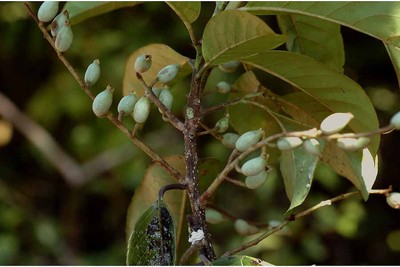
Common Name: Lodh, Lodhra
English Name: Lodh, Symplocos Bark, Lotur Bark
Botanical Name: Symplocos racemosa Roxb.
Family: Symplocaceae
Description: Symplocos racemosa Roxb. is an evergreen plant widely distributed in the tropics and subtropics of Asia, Australia and America. .A small tree, about 6-meter high. Leaves 8-20 cm long, dark green leathery, usually pointed at tip, margins entire or toothed. Leafstalk small, about 8-20 mm long. Flowers small, about 1.2-cm diameter, white or pale yellow, in small axillary clusters.
Chemical Constituents: Trunk bark contains monomethyl pelargonidin glucosides (I and II) and pelargonidin-3-O-glucoside. A wide range of bioactive compounds including flavonoids, tannins, loturine, loturidine, colloturine, linoleic acid, salireposide, symplocososide, betasito-glycoside, symploveroside, benzoylsalireposide, salireposide etc. have been isolated from this plant.
Properties: It has been considered as drug of choice in the treatment of gynecological disorders. Lodhra has been used to cure the menorrhagia, leucorrhea (excessive discharge from vagina) and other menstrual disorders. It is also useful in abortions and miscarriages and for ulcers of vagina.
Used in the following MATXIN product: